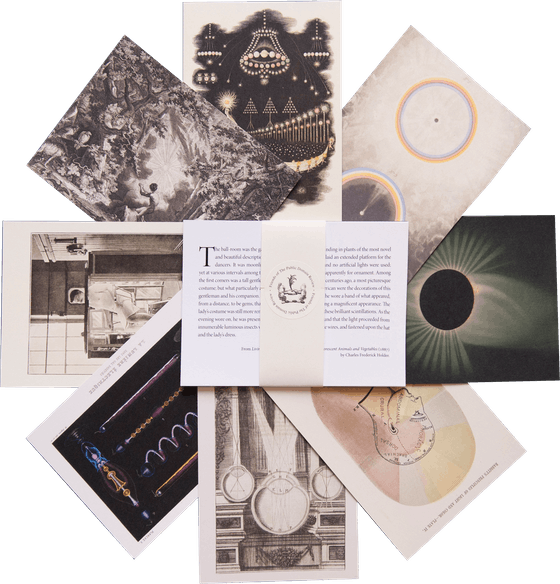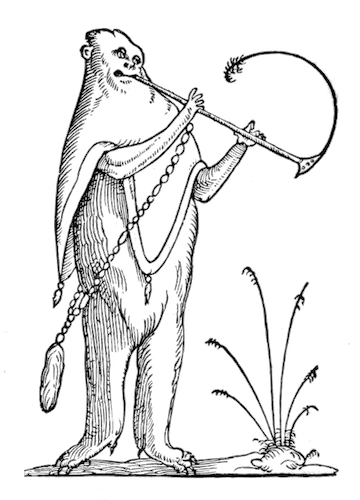
Sea Monsters Unmasked and Sea Fables Explained by Henry Lee (1883)
Whether through their gleaming, glittering promotion of imagined (ever-improving) technological futures or their troubling “human zoo” displays of colonial peoples, a few World Fairs and Universal Expositions — the Great Exhibition of 1851 or Chicago World’s Fair of 1890 perhaps — have lived long in the imagination. Most, however, have not: the International Fisheries Exhibition of 1883 is among their number.
Between May and October of 1883, more than 2.6 million visitors travelled to see the spectacle in the grounds of the Royal Horticultural Society in London. At the centre of its displays from over thirty countries and colonies was an aquarium containing 65,000 gallons of water — the largest exhibition aquarium ever constructed. With an eye to posterity, the organisers did their best to promote themselves, creating a Literary Department that produced a variety of guides and handbooks for the exhibition throughout its six-month run. Two of these tie-in publications — Sea Monsters Unmasked and Sea Fables Explained — spoke particularly to the paradoxical place of the sea in both the imagination and science of the late nineteenth century: as a setting for tales of mysterious beasts, but also an increasingly scrutinised space for research on a shrinking globe.
Both books were written by Henry Lee (ca. 1826–1883), the former naturalist at the Brighton Aquarium and a prominent science communicator du jour. Numbering just over 100 pages each, Lee’s two brief works exude a Darwinian confidence. In them, a professional man of science, following in the great naturalist’s wake, exposes the follies of the past, rationalising traditional accounts through logical reasoning and recent discoveries in the marine world.
Although Lee narrates accounts of sea beasts to disprove them, the pamphlets also serve as unintended compendia of maritime folklore on aquatic cryptids. In Sea Monsters Unmasked, Lee focuses on the Kraken and the Great Sea Serpent. With the Kraken, he notes the regularity with which sightings emerged from Scandinavia and suggests that this helps explain why the Swedish taxonomist Carl Linnaeus included it in the first edition of his System Naturae. Of the many reports depicting the beast’s attacks on ships, Lee critiques Denys de Montfort’s account from 1680, known for its much-reproduced illustration, dismissing it as a “drawing fitter to decorate the outside of a showman's caravan at a fair than seriously to illustrate a work on natural history”. To Lee, thinking of the cuttlefish washed ashore and collected by European museums, the sightings of the Kraken were nothing more than encounters with squid, embellished for effect.
For the Great Sea Serpent, Lee lists sightings from Ancient Greece to the 1840s, spanning from the Mediterranean to North America — all observations of a giant snake-like creature. He also unpicks these accounts, arguing again that the most likely explanation for the sightings was the misidentification of giant squids. He highlights the washing ashore of a carcass on the Orcadian Island of Stronsay in 1808, which was claimed to be that of a sea serpent. Lee confidently asserts that “the whole fabric of circumstances” surrounding this claim “crumbled at the touch of science”. (It should be noted that before these claims were dismissed, the Natural History Society of Edinburgh believed there was sufficient evidence to declare the carcass to be that of a sea serpent.)
Henry Lee, Sea Fables Explained (London: William Clowes and Sons, 1883).
Lee’s second book, Sea Fables Explained, although featuring accounts of the Hydra and the Paper Nautilus, primarily focuses on sightings of mermaids. Lee takes — if you will — a deeper dive into encounters with this creature, not only drawing connections back to the belief systems of Mesopotamia but also documenting accounts from broader geographies than those of the other creatures he describes. Ultimately, Lee explains away mermaids, believing them to be sightings primarily of manatees and dugongs, whose wide global distribution accounted for the profundity of the tales.
For Lee, the accounts of sailors — “Jolly Jack Tars” — can be explained by the natural superstition he assumes sailors possess: “To the best of his belief, he has told the truth. He has seen some living being which looked wonderfully human, and his imagination, aided by an inherited superstition, has supplied the rest.” The imagination of one particular sailor quoted by Lee catches the eye of the twenty-first century reader, however; tucked away on page 74 of Sea Monsters Unmasked, to aid the description of a whale’s waterspout, Lee quotes from “the remarkable” novel by a “Mr Herman Melville”. The title Lee gives of the book is not Moby-Dick, but The Whale — as it was called on its publication in Britain in October 1851 (it was retitled for its publication in the United States a month later). Lee’s praise also mirrors how contemporary British critics were more favourably inclined to the book than their American counterparts (notoriously) were. It is notable that Lee, despite his views on sailors’ tendency to embellish, praises Melville’s accuracy based on experience; although Melville is “not a naturalist”, he has “served before the mast in a sperm-whaler and borne his part in all the hardships and dangers of the chase”.
Sea Fables Explained also speaks to our present concerns over the natural world. Lee fears that the dugong and manatee will be hunted to extinction and offers a warning to us that feels unerringly accurate in our own time of environmental crisis:
I fear that before many years have elapsed the Sirens of the Naturalist will have disappeared from our earth, before the advance of civilization, as completely as the fables and superstitions with which they have been connected, before the increase of knowledge; and that the mermaid of fact will have become as much a creature of the past as the mermaid of fiction.
The International Fisheries Exhibition has certainly faded from memory, but with Lee’s short volumes, we are reminded again that our connection to the sea — whether as a fantastical realm, place of research, or depleted ecosystem — is something time will not allow us to forget.
Enjoyed this piece? We need your help to keep publishing.
The PDR is a non-profit project kept alive by reader donations – no ads, no paywalls, just the generosity of our community. It’s a really exciting model, but we need your help to keep it thriving. Visit our support page to become a Friend and receive our themed postcard packs. Or give a one-off donation. Already a supporter? A huge thank you for making all this possible.
Apr 15, 2025






